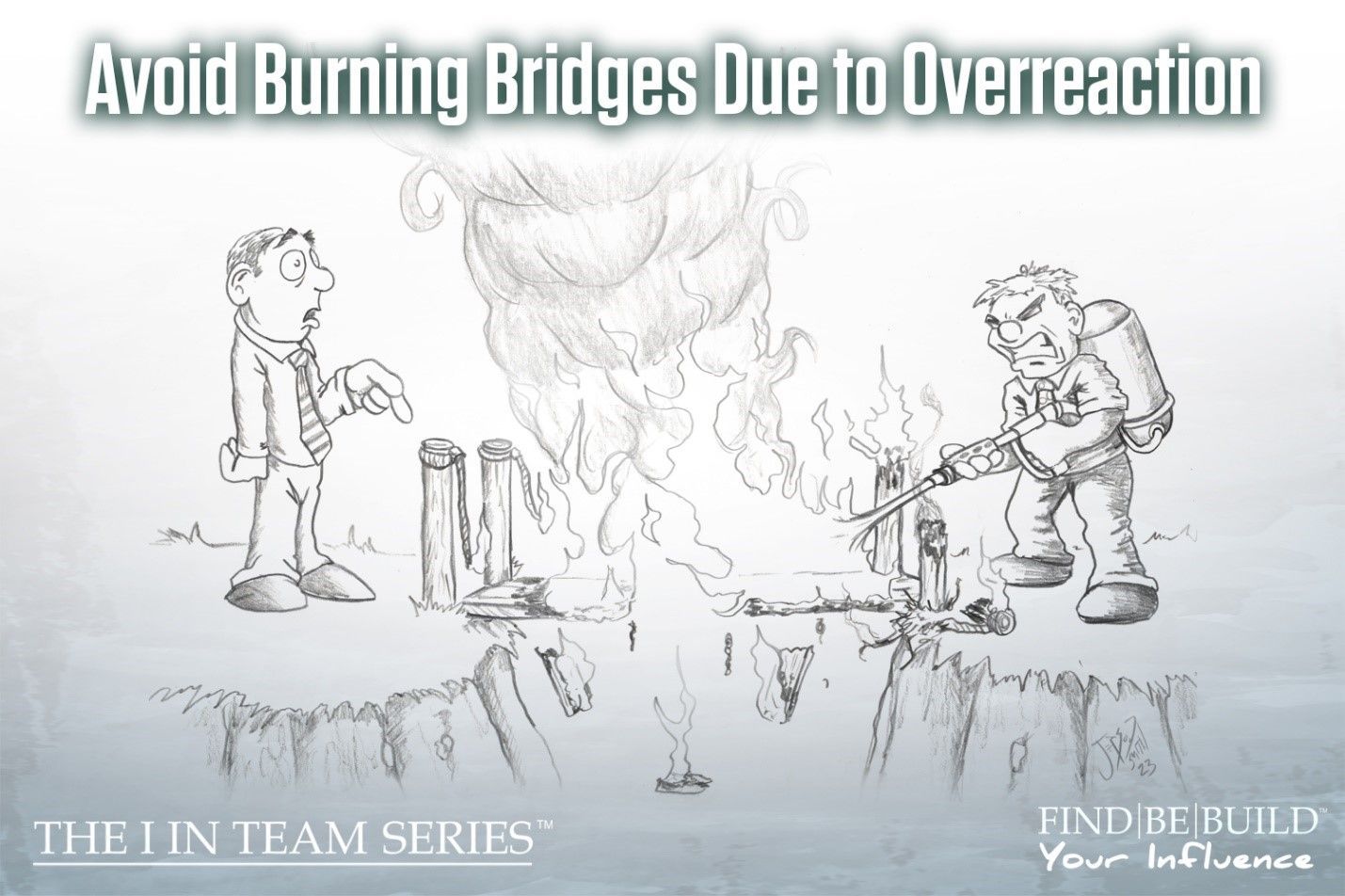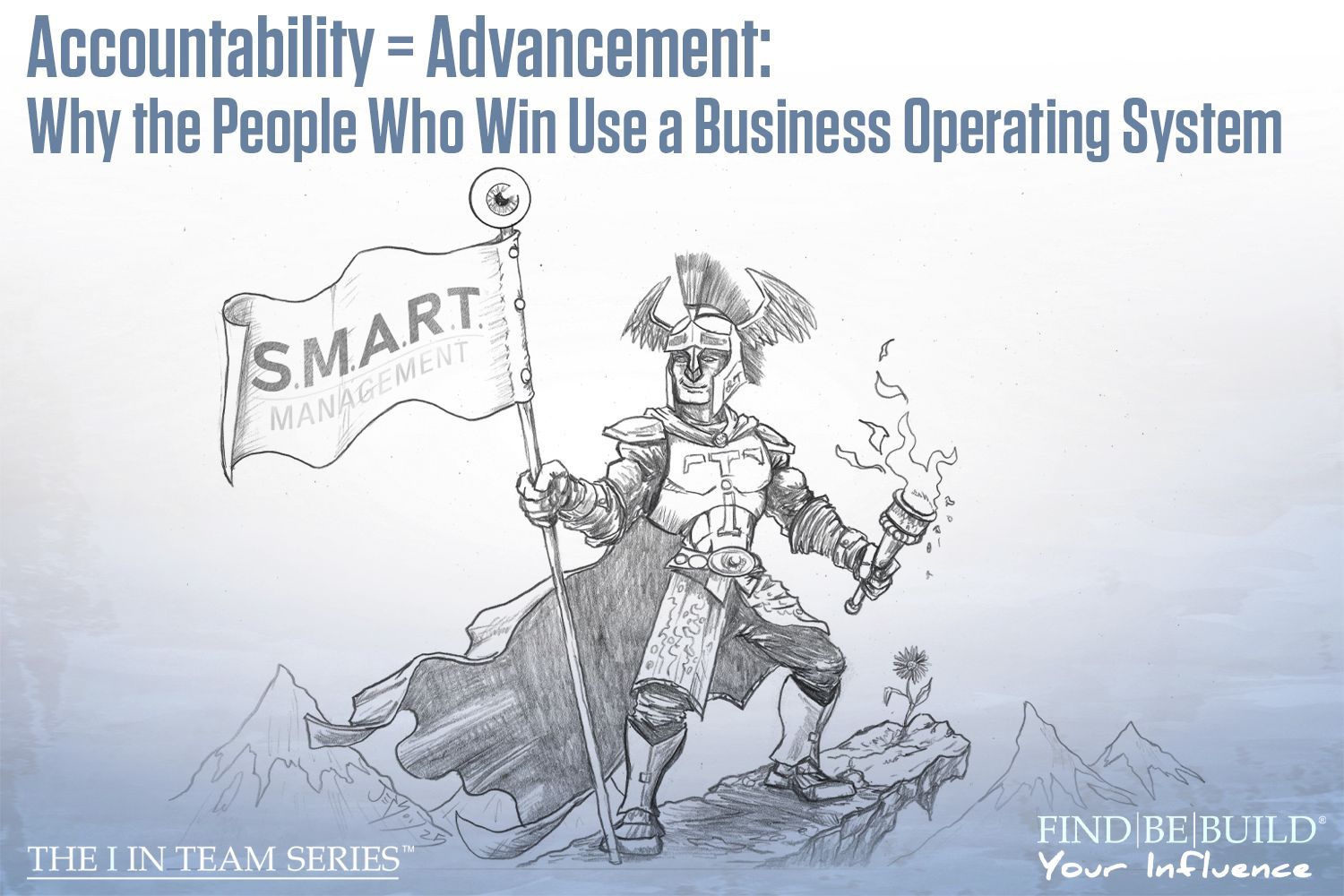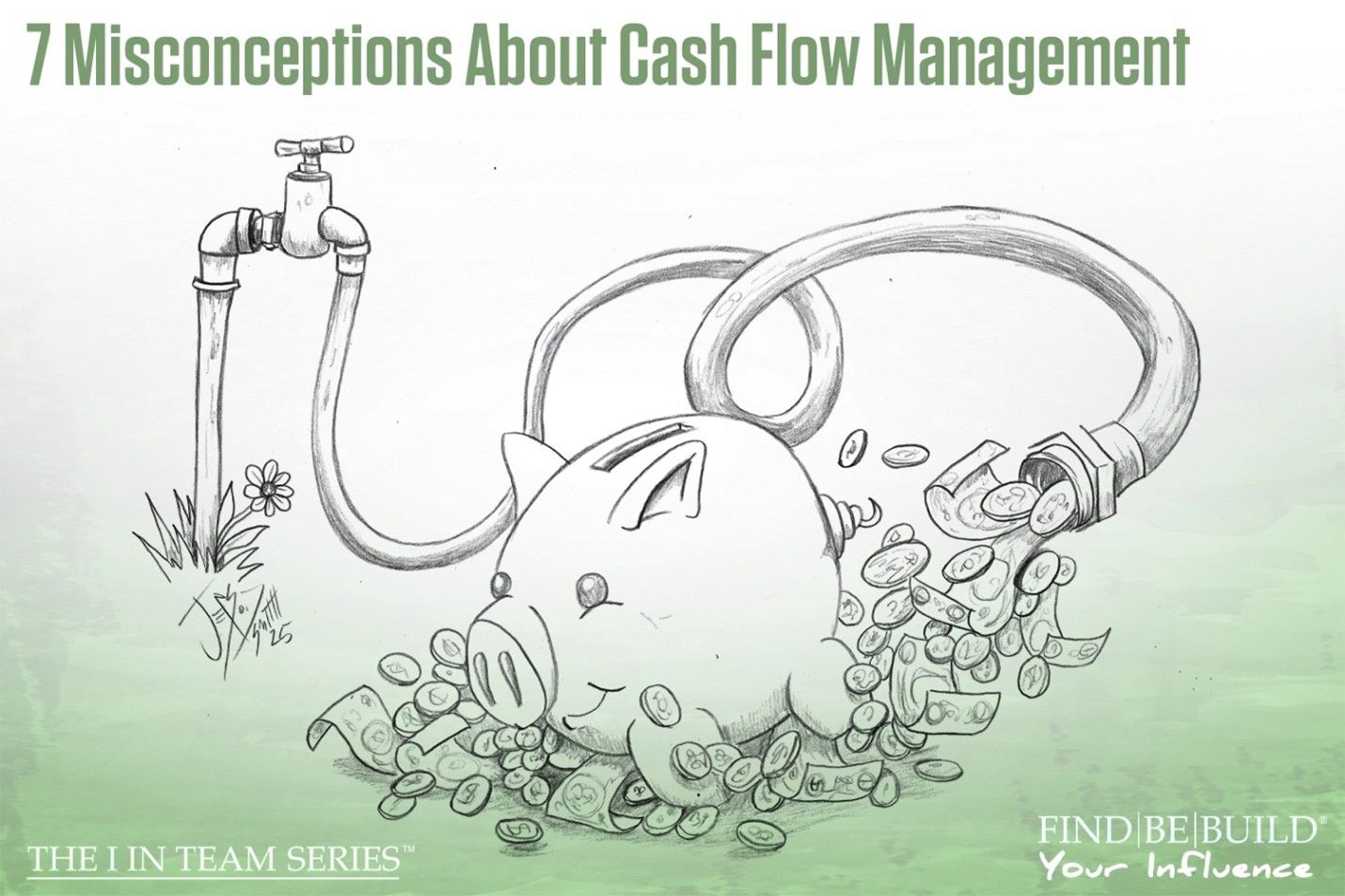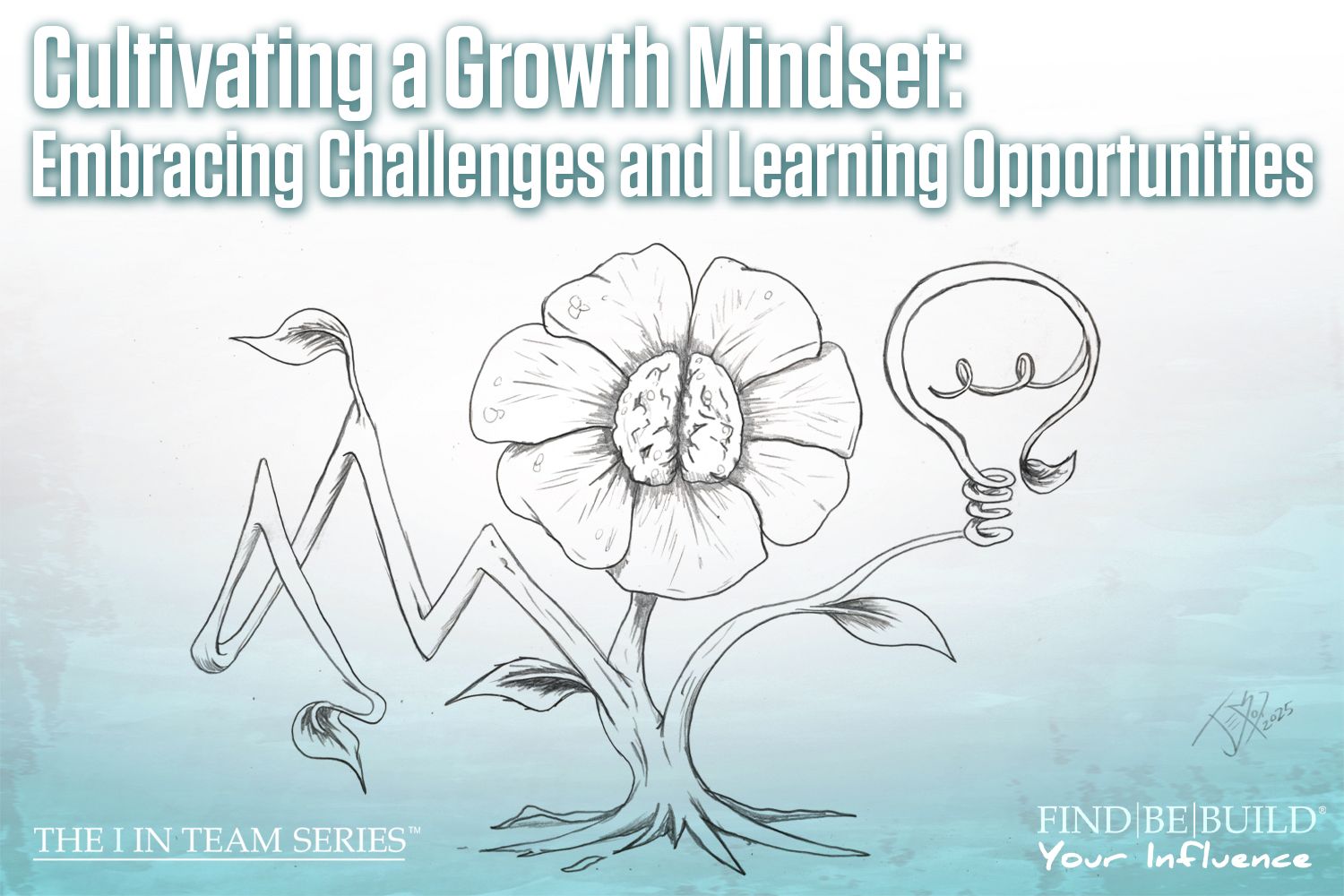Avoid Burning Bridges Due to Overreaction

Business consulting conflict resolution
Avoid Burning Bridges Due to Overreaction
Hi, team! It’s your friends, Brian and Mary, with the “I” in Team series where you can find, be, and build your positive influence. One topic we cover in our new book, Positive Influence: Be the “I” in Team, is pitfalls, and burning bridges due to overreaction is a huge pitfall. Though not in every case, one of the common byproducts of overreaction is, in fact, burned bridges. Burning a bridge means moving on with your life and severing all ties with someone so they no longer affect you. It means that, regardless of what that person may do, you will never again extend an option for them to benefit from you in any way—and vice versa.
Overreaction can cause us to burn a bridge with someone, or it may cause someone to burn a bridge with us. Either way, burning bridges is a huge pitfall and can affect our influence for the rest of our lives. Many of us have been told to never burn a bridge, and it’s a good piece of wisdom. Burning bridges isn’t the best way to go about dealing with issues. Although, some exceptions do apply, which we will cover here.
Why do we burn bridges?
There are bridges in life that will need to be burned, sometimes just for your emotional, psychological, or physical health, and other times for the health of your organization. When you burn a bridge, you are shedding a burden for good. That is the final act that severs all ties and eliminates the burden. If you find that you are consistently returning to thoughts of the bridge that was burned, then you did not burn the bridge effectively, or that bridge may not have needed to be burned.
The reasons for burning bridges are as numerous and complex as humans. They are unique to what that person values, wants, and perceives. Burning a bridge is a very personal decision, one made through the lens of our experiences, making the decision subjective to each of us. While there is no simple formula, the path to burning a bridge should be made thoughtfully and not out of pure emotion. It is ill-advised to make impactful decisions like cutting ties when the wounds are fresh. Give yourself some time to think and weigh the value of your decision.
We also recognize that while burning bridges can be a positive decision, it’s not always a positive experience. The pitfall is that burnt bridges occur when we set up situations that enable them to be burnt. Acknowledging burnt bridges allows us to identify if there is something within us that makes burning bridges possible. While we may be the ones burning the bridge, we too should reflect about how we contributed to the need for the burning.
Moving On
There are also risks involved with burning bridges. While burning a bridge can eliminate a burden or other issue that is negatively affecting you or your organization, there may be emotional or social repercussions, or “scars”, that can affect how you behave in or think of future relationships. When we burn a bridge, we create a need to fill the void created. Whether that is a friendship or a business partner, we will look to fill the hole in our lives after we have removed someone from it.
The effect of having to fill the gap can trigger several other pitfalls. We may make assumptions about how others will treat us or what capabilities are necessary to support our growth. We may overreact to new situations based solely on our past experiences. We may take newcomers for granted instead of working to develop a relationship with them. We may make these choices because the fear of having to burn another bridge is a possibility that we may find difficult to face.
Remaining Composed
Burning bridges may feel good as we burn them, but it is a pitfall for a reason. In the end, it is not an advantage (not always, at least). Knowing how to refrain from burning a bridge and moving on in a different way is one of the most advantageous paths we can take to move forward. The best way to avoid burning a bridge is to keep your composure. When we act unprofessionally (which is usually part of an overreaction), make assumptions about intentions, or jump to conclusions, we are setting ourselves up for failure. We must remain composed with open communication to work through the small issues, so they don’t build up into larger issues.
We may need to take the high road to avoid burning a bridge. It may not be fun, but sometimes it’s better to just let things go in order to save something for down the road. We need to take accountability for our part in the issues we are facing and try to understand the perspective of the other person. It is possible that we are to blame for the want to burn this bridge; it is a difficult pill to swallow and may be difficult to even consider, but in the heat of the moment, maintaining composure is incredibly important. Emotions don’t allow us to see a picture fully or clearly.
Be ready to be accountable for your actions and adopt a humbler approach toward rectifying the issue. This final attempt to stop a bridge from being burned may require sacrifice on your end. You must ask yourself if it is worth it. You must decide if whatever you have to sacrifice is worth saving the friendship or partnership. Sometimes the ends do justify the means. The positive aspect of this is that you can control the means.
Bottom Line
In the end, you cannot control what other people do. You must do what is best for yourself and those around you. Your influence should be your top priority because you always want to have a positive influence. Sometimes that means changing your approach toward solving a problem if someone is trying to burn a bridge with you. Sometimes it means being the one to burn a bridge with other people. Only you can decide what is right for you, but do so without overreaction in a composed and humble headspace.












